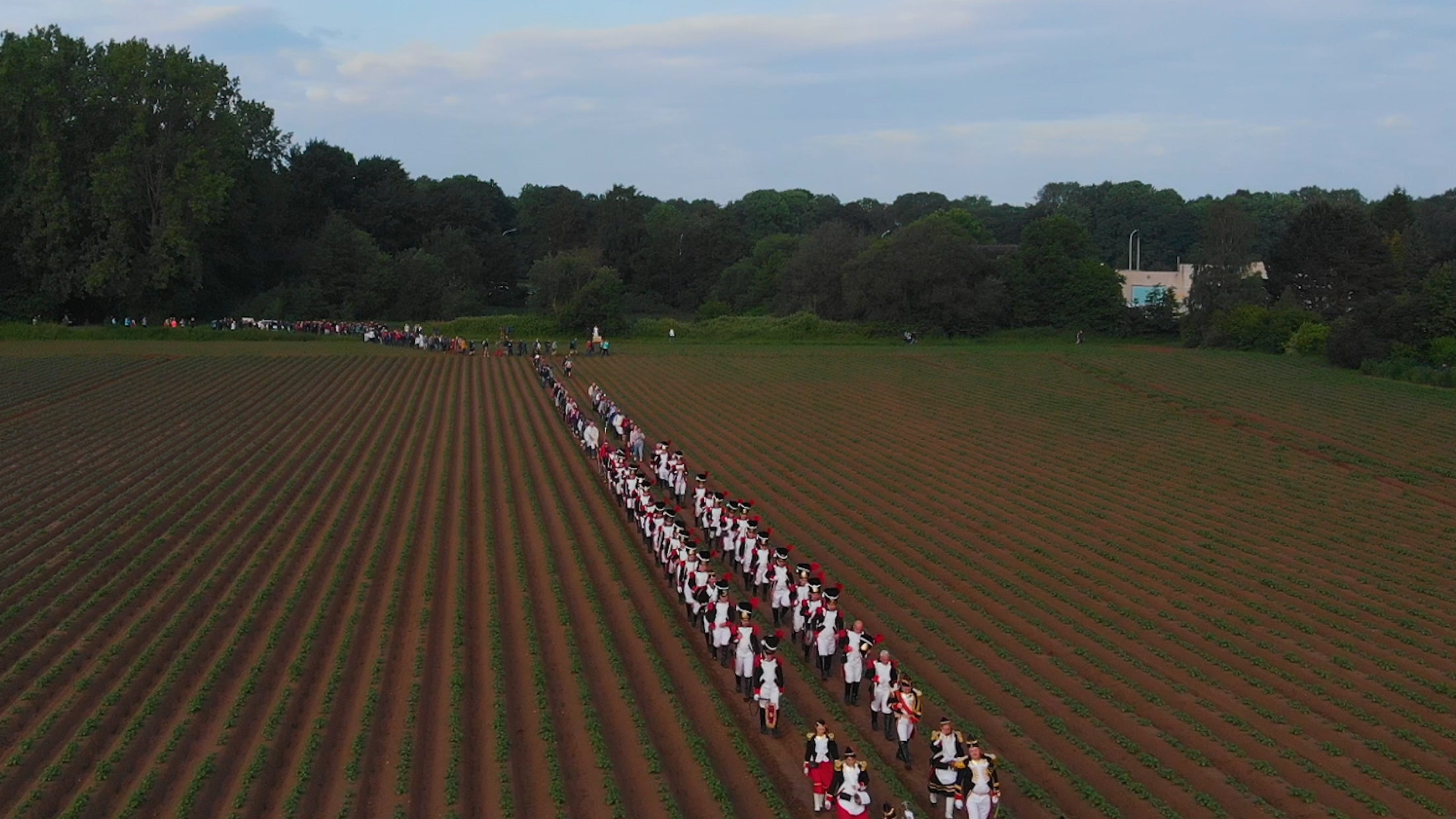At the heart of the UNESCO-recognised Folkloric Marches


Entre-Sambre-et-Meuse Folkloric Marches
Focus on Sainte-Rolende, Gerpinnes
The folkloric Marches of Entre-Sambre-et-Meuse are so much more than a group of uniform-clad chums throwing a party. Behind the festivities there is a whole movement which unites the inhabitants of over fifty towns and villages. Come and discover the March of Sainte-Rolende.
“On Friday evening, I go home to my parents for the March celebrations. The sound of fife and drums gets me into the swing of things straight away and fills me with energy and joy”, explains Gaël Gilbert, flag bearer and marcher for as long as he can remember.
The next three days will see him taking part in the Sainte-Rolende March in his old village of Joncret. The reunions begin to get underway on Saturday. The solemn procession takes place on Sunday and the day is punctuated with multiple main events, such as the mass held for the celebrated saint, the battalion formation and the return to church. On Monday, a torchlight procession brings festivities to a close.

The sound of fifes and drums gets me into the swing of things straight away and fills me with energy and joy.
The procession follows the Sainte-Rolende Route, a 35 km-long trail through the neighbouring fields and countryside, with several stops along the way at the chapel, farm, etc.
Marchers, pilgrims, locals and visitors
The area around Entre-Sambre-et-Meuse attracts over 10,000 marchers at over a hundred folkloric marches. Whilst each enjoys its own traditions, they have at least two things in common: an armed escort and a religious procession.
As far as the Sainte-Rolende March is concerned, a whole network of people is needed to get things up and running.
”Here, everyone in the procession knows each other. If not personally, at least by name”, recounts Gaël Gilbert who has always marched alongside his dad, also a flag bearer. The different marchers each have specific roles in the procession: cavalier, sergeant-sapper, sapper, drum major, drummer, officer, etc. They wear a costume from the First or Second Empire, which varies according to their rank. Some are armed with a rifle or a blunderbuss.
The marchers escort the relics of Saint Rolende. “Just as in the olden days, to avoid unwelcome confrontations, the religious procession is protected by an armed militia”, adds Gaël Gilbert.

The pilgrims accompany the parade for the duration of the route. “I have been doing the Sainte-Rolende March for several years now, I do it for someone close to me who is currently suffering”, says Julie, a pilgrim.
Finally, the event brings the whole municipality of Gerpinnes together to celebrate. Villagers throw open their doors and welcome the marchers. “The March is a big part of our family celebrations. It is a permanent fixture on the calendar every year, without exception, and is on a par with Christmas. We never miss it. It marks the passing of time”, adds Gaël Gilbert. Her mother and her husband, who don’t march, are also fully involved in the celebrations.
The March is very much a family celebration.
Tourists enjoy the folklore, too. They flock to attend the battalion formation and the return to Gerpinnes.
Yearlong preparations
The folkloric Marches of Entre-Sambre-et-Meuse take place from May to October. The Sainte-Rolende March takes place on the weekend of Pentecost.
Aside from the official parade, organising the March itself is an essential feature of local life. “Suppers are organised to support the companies. In Joncret, during a tradition known as the breaking of the glass, everyone is allocated their position in the parade,” explains Gaël Gilbert.
Locals also get involved with making the costumes and readying the accessories. “We meet up before the big day to try on our costumes and inspect the weapons”, he continues. “These costumes are imbued with real know-how, passed down from generation to generation”.
Music also brings the villagers together. Musicians practice together all year round. The different melodies, especially those played on the fife, can only really be taught by listening to them, and are passed on from seasoned musicians to those just learning. Very few of the scores come from an official repertoire.
The way is paved for the marchers and the pilgrims. The different footpaths and trails, winding around the fields and the houses, are kept clear for the march. The chapels, the field where the battalion formation will take place and the church grounds for the return journey are all readied in preparation.

UNESCO’s Masterpieces of Intangible Heritage
Several of the Marches are listed by UNESCO as masterpieces of intangible cultural heritage of humanity, including Sainte-Rolende. This recognition highlights the ancestral folklore that the scores of marchers are helping to keep alive.
The values conveyed by this secular tradition bring inhabitants together: the Marches unite them around a common purpose. They contribute towards local pride and are a big part of the area’s social and economic fabric.

Contact :
Association for the Folkloric Marches of Entre-Sambre-et-Meuse: http://www.amfesm.be
Each March is run by an individual organising committee.
Museum of Entre-Sambre-et-Meuse marches: http://www.museedesmarches.be
©Vidéo/Reed & Jérôme Gobin